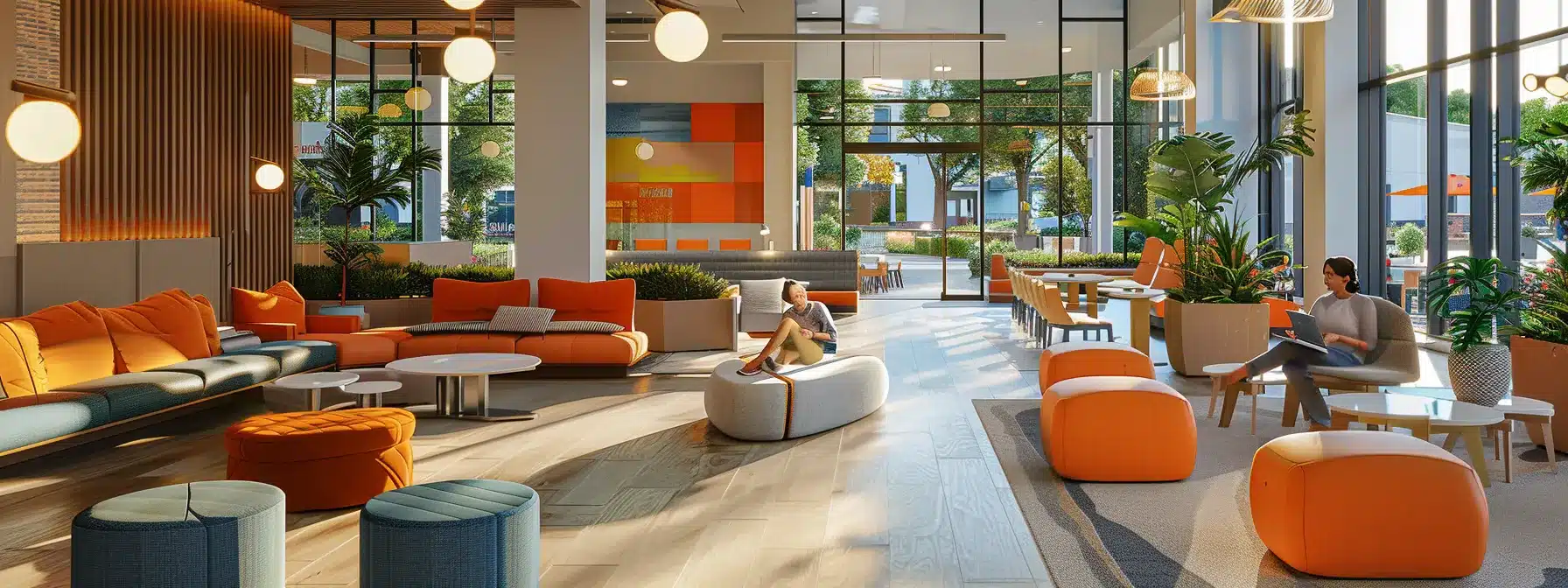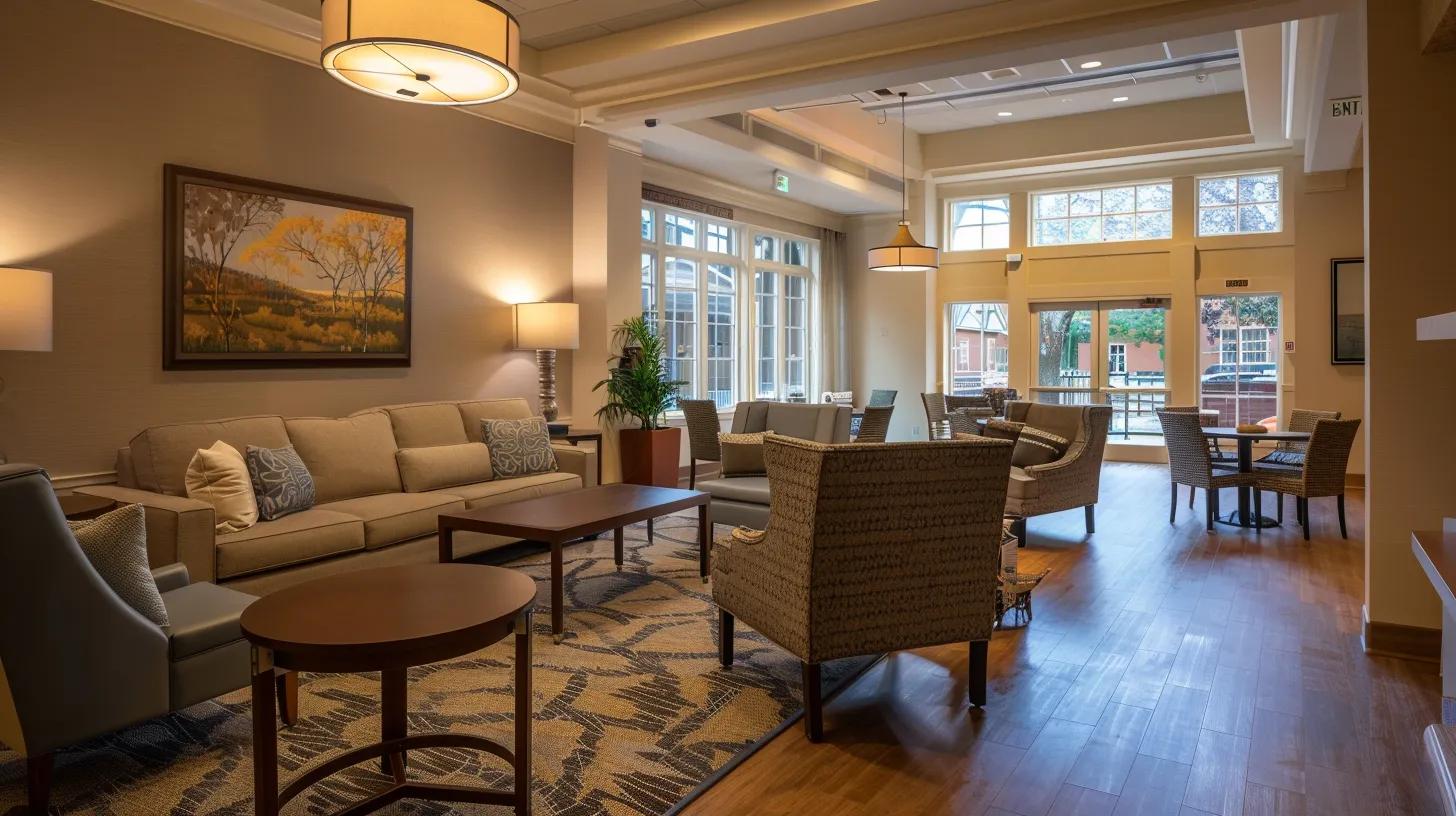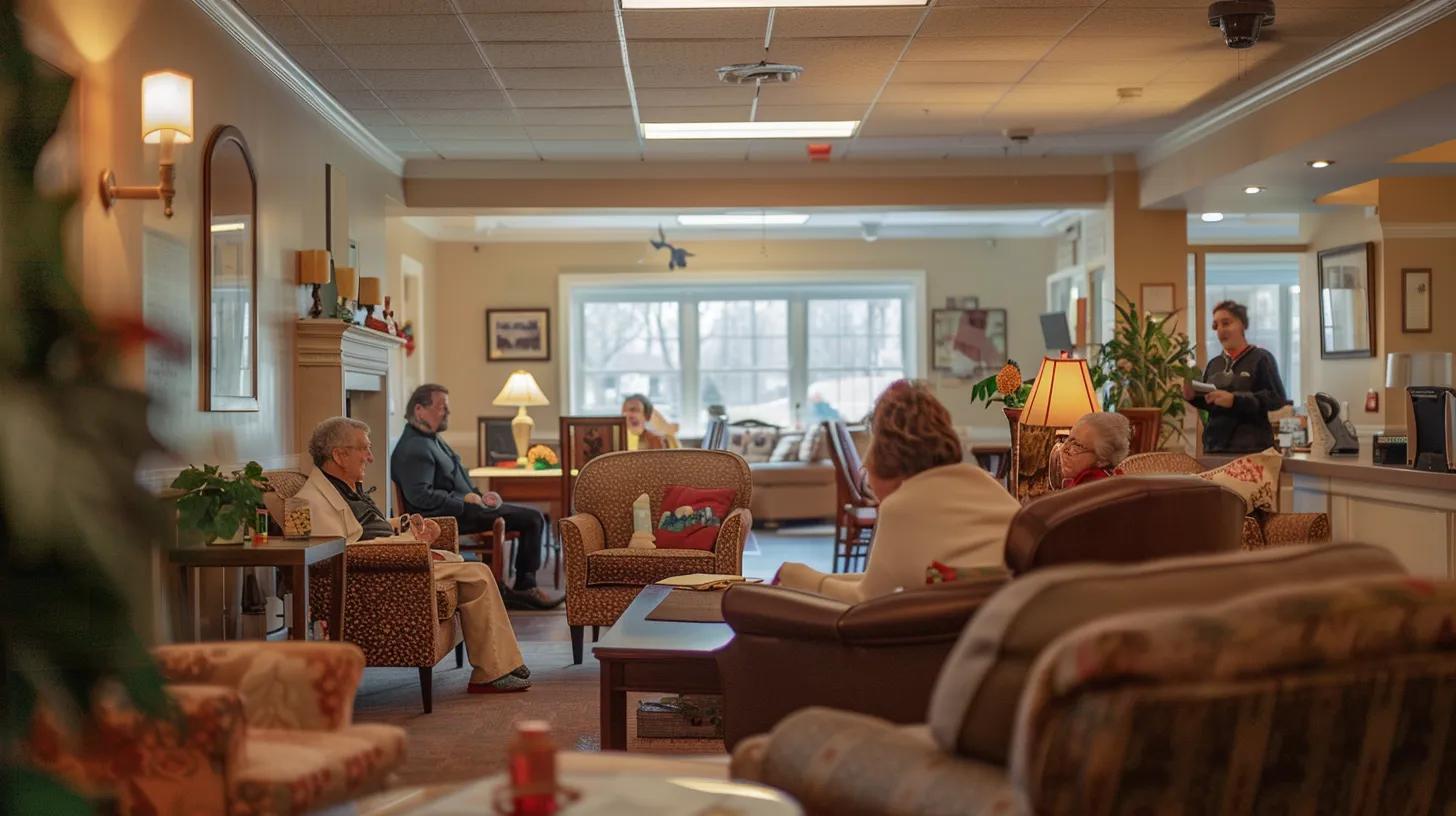Find a comprehensive guide to assisted living for dementia care, offering insights on services, support, and compassionate living environments for loved ones.

Navigating the Different Types of Assisted Living Facilities
Table Of Contents:
- Understanding the Different Assisted Living Facility Types
- Key Takeaways
- Understanding Assisted Living Facility Types
- Types of Assisted Living Facilities
- Factors to Consider When Choosing an Assisted Living Facility
- Benefits of Assisted Living Facility Types
- Myths and Misconceptions About Assisted Living Facilities
- The Future of Assisted Living Facilities
- Frequently Asked Questions
- Conclusion
Understanding the Different Assisted Living Facility Types
Are you facing difficulty choosing the best assisted living facility type for your loved one? This post explains the variety of assisted living facility types and helps uncover common myths. It covers key factors to consider and benefits that assist with informed decision-making. The content offers practical insights for those dealing with memory care needs, including tailored guidance for families in Ypsilanti and the greater Ann Arbor area.
Key Takeaways
- Memory lane provides a home-like setting for specialized memory and dementia care
- the facility offers personalized care plans with professional oversight
- residents enjoy social engagement and routine health monitoring
- families benefit from transparent communication and clear cost details
- technology integration supports real-time health tracking and care adjustments
Understanding Assisted Living Facility Types

This section defines assisted living facilities, outlines key features in senior care, and details available services. It compares these environments with home care options and other types of senior living facilities, including retirement community models often used to reduce loneliness and prevent injury. Practical insights help clarify differences across care options.
Defining Assisted Living Facilities
This facility type caters specifically to seniors and focuses on providing a home-like setting where personalized care is standard. Each living space includes a private bedroom and bathroom to promote independence while offering professional assistance, including support for memory and dementia challenges, all under contract agreements that ensure consistent and reliable care.
Assisted living facilities blend independence with necessary support in a residential environment. This setup offers tailored services that address individual needs, such as specialized care for those with memory and dementia issues, ensuring that each resident’s bedroom and bathroom contribute to comfort and well-being, maintained through clear contract agreements.
Key Features of Assisted Living Environments
Assisted living environments provide structured support that includes memory-care-services along with routine supervision that helps prevent abuse and ensures a safe setting for all residents. Experts note that strict regulation provides reassurance and fosters trust among caregivers and families, while the system addresses practical concerns such as cost of living, particularly in competitive markets like long island.
The model delivers tailored solutions designed to meet specific physical and cognitive needs, with regular evaluations and professional care management. Care providers routinely adjust services to match residents’ requirements, creating an environment where safety and comfort are prioritized while maintaining clear standards against abuse.
Services Offered in Assisted Living Facilities
Assisted living facilities offer a range of services designed to meet the needs of elderly care while ensuring a supportive environment for both the parent and family caregivers. These services include assistance with daily living tasks, medication monitoring, and specialized memory support, all provided in a long term assisted care facility setting that guarantees reliable care and safety for residents.
The comprehensive service model incorporates various support systems that address practical needs:
- Personalized help with daily routines
- Professional oversight for memory challenges
- Assistance in financial planning options including reverse mortgage guidance
This approach allows professionals to offer targeted support that reduces the burden on family caregivers while ensuring quality elderly care.
Comparing Assisted Living With Other Senior Care Options
Comparing assisted living with other senior care options shows a distinct balance between independence and supportive care, where familiar settings and structured assistance work together to meet physical and cognitive needs. Research demonstrates that residential care environments can tailor medication monitoring and daily routines to address specific disease-related challenges effectively.
Assisted living facilities set themselves apart by offering personalized care plans that adapt to evolving conditions while maintaining regular oversight for medication and overall wellness. This thorough approach helps minimize risks associated with disease management and creates a safer residential care setting for clients, as seen in the following table:
The guide now shifts to detailing the different facilities. The next section clears the fog, showing the unique styles of each option.
Types of Assisted Living Facilities

This overview covers standard assisted living facilities, memory care assisted living options, homes with specialized services, high-end communities, and urban versus rural models. Each option is examined using factors such as supplemental security income, health insurance, fee, owner, and price, offering families practical insights to help in choosing the best setting for their loved ones.
Standard Assisted Living Facilities
Standard Assisted Living Facilities provide a balanced approach between independence and supportive care, offering a home-like setting where personalized attention meets essential daily support. These facilities, a notable type of long term care facilities, operate within the healthcare industry with a focus on maintaining high standards of hygiene and effective strategies to support aging in place.
With inflation influencing overall living costs, these settings offer practical solutions that prioritize resident well-being while remaining cost effective. Experts in this facility model ensure that care plans address everyday challenges and financial concerns, reflecting a commitment to both safety and seamless care in an ever-evolving healthcare industry.
Memory Care Assisted Living Options
Memory Care Assisted Living Options offer specialized support for patients requiring dedicated alzheimers care that aligns with current law standards and best practices in nursing. Facilities in places like queens exemplify a commitment to creating a secure and nurturing space where individualized support ensures every patient receives personalized care.
These settings feature experienced professionals who monitor health closely and provide comprehensive nursing services to address the challenges associated with dementia:
- Expert alzheimers care tailored to individual needs
- Adherence to established law protocols in patient management
- Skilled nursing personnel committed to quality care
- Facilities in queens designed with patient safety in mind
This model reinforces a practical approach to patient care in a supportive environment.
Assisted Living Facilities With Specialized Services
This facility combines specialized services such as personalized meal planning with dedicated assistance, providing support that goes beyond typical care settings. With a commitment to resident well-being similar to offerings found in Minneapolis and Staten Island, every resident finds a secure environment and quality care that resembles a well-run nursing home.
Professional staff ensure that care is personalized to address each individual’s unique needs while considering factors such as income levels and meal planning preferences. The facility’s approach reflects expertise in delivering tailored services, ensuring that residents combine independence with essential support in a setting that rivals best practices in nursinghome care.
High-End Assisted Living Communities
High-End Assisted Living Communities offer a refined environment for consumers seeking a secure and graceful retirement home experience. These communities accommodate a caregiver approach that relieves family concerns about potential risk while providing well-planned respite care options.
Residents benefit from personalized programs designed to meet specific needs, including medication management and social engagement initiatives, which help reduce risk in daily activities:
- Tailored health monitoring
- Scheduled respite care sessions
- Onsite caregiver support
- Enhanced retirement home amenities
Urban vs. Rural Assisted Living Facilities
Urban assisted living facilities benefit from extensive support systems that include prompt emergency response and dedicated staff for housekeeping, while an ombudsman ensures resident rights are safeguarded. These environments often provide practical solutions for veterans and those facing poverty, ensuring no resident feels overlooked in a fast-paced setting.
Rural assisted living options emphasize steady, community-focused care with strong personal attention during emergency situations and routine housekeeping services. Professionals in these settings work closely with veterans and collaborate with an ombudsman to address challenges like poverty, ensuring residents receive reliable and caring support.
Different facilities offer distinct experiences. Now, the focus shifts to the key points one must weigh when choosing a place that feels like home.
Factors to Consider When Choosing an Assisted Living Facility

This section covers key topics: assessing individual care needs, evaluating facility ratings and reviews, understanding costs and payment options, considering location and community environment, and visiting facilities. It offers practical insights on medicaid assistance, resident attention, stress reduction, behavior support, and accessibility—all essential for making informed choices in assisted living options.
Assessing Individual Care Needs
When evaluating individual care needs, it is vital for families to consider specific requirements such as the availability of physical therapy and proper dementia care support. Experts note that residents in new york city facilities may benefit from specialized equipment like wheelchairs, ensuring mobility and safety while comparing these setups to home care in the united states options.
Assessment centers on matching specialized services to each person’s daily routines and overall well-being. Professionals recommend that attention to mobility aids and tailored physical therapy programs can significantly improve quality of life, especially when integrated with comprehensive dementia care programs.
Evaluating Facility Ratings and Reviews
The evaluation process should include a careful review of facility ratings and reviews to ensure the information reflects reliable feedback from previous residents and caregivers. Experts advise that verifying ratings through sources like the new york state department of health can provide clear insights into quality care, giving families valuable guidance in assessing potential expense without compromising essential services such as those provided by a dedicated physician in the vibrant village setting.
Reviewing facility feedback can help determine how well a community addresses the specific demands associated with old age. Professionals emphasize that firsthand observations from residents and medical evaluations guide families in understanding the balance between affordability and quality care, ensuring that each review echoes trustworthy experiences in assisted living environments.
Understanding Costs and Payment Options
Families considering a place for mom as she transitions into retirement should examine the facility’s fee structure thoroughly. They need clear details on monthly and one-time costs, as well as any potential extra charges associated with specialized care.
Financial planning for assisted living requires comparing payment options available to seniors. Understanding available resources and tracking cost changes can help families make a well-informed decision that fits into their budget.
Importance of Location and Community Environment
Location plays a critical role in the selection of an assisted living facility, as proximity to family and trusted services can ease access to essential resources. The facility’s position within a familiar community often means quicker responses during emergencies and a support network that helps maintain residents’ overall well-being.
The surrounding community environment contributes to a resident’s sense of belonging and safety. It offers opportunities for social interaction and local support that can reduce isolation, ensuring residents feel connected and secure in their new setting.
Visiting and Assessing Facilities
Visiting facilities offers a practical view of the assisted living environment and provides firsthand insight into daily operations and resident interactions. It allows professionals to observe care routines and gauge facility responsiveness to residents’ needs:
- Review facility layout and emergency preparedness
- Observe interactions between staff and residents
- Verify safety measures and home-like atmosphere
Assessment visits shed light on the quality of support and overall ambiance of the facility. Experts advise that structured tours help identify important factors such as accessibility, cleanliness, and available social engagement opportunities.
Choosing the right place matters, and every choice carries its own rewards. Next, the discussion turns to the advantages offered by different facility types.
Benefits of Assisted Living Facility Types

This section outlines practical benefits of assorted assisted living facility types. It highlights social engagement and community life, consistent health monitoring with emergency care, personalized care plans and support, and transition support for new residents. Each focus area provides valuable insights into how these settings improve overall well-being and create a secure, home-like environment for seniors.
Social Engagement and Community Life
Social engagement in assisted living facilities at Memory Lane Assisted Living fosters a sense of belonging and everyday connection. The community environment encourages residents to participate in group activities, promoting mental stimulation and friendly interactions.
The environment is designed to support community life and personal growth, with regular social events that bring residents together. Professionals at the facility ensure that every activity contributes to a comfortable and supportive atmosphere, making each day meaningful.
Health Monitoring and Emergency Care
Memory Lane Assisted Living provides constant oversight of residents’ health and prompt emergency response, ensuring every individual’s safety and comfort. The facility’s trained staff actively monitor health metrics and offer quick intervention during unexpected incidents, bringing peace of mind to families and residents alike.
Expert care teams at the facility work to seamlessly integrate daily health monitoring with efficient emergency support. Their practical approach addresses common concerns regarding immediate care access, ensuring that residents receive timely assistance during critical situations.
Personalized Care Plans and Support
Memory Lane Assisted Living is committed to creating tailored support systems that directly address individual resident needs with personalized care plans. This practical approach includes regularly updated programs that ensure each resident receives care that adapts to their health changes and primary concerns:
- Comprehensive evaluations
- Individualized medication management
- Routine check-ins and adjustments
- Coordinated support services
Specialists at the facility work with families to design care strategies that reflect personal health requirements and everyday routines. This focused support model provides a reliable solution for senior challenges, guaranteeing that each resident benefits from attentive and specialized care plans.
Transition Support for New Residents
Memory Lane Assisted Living provides a smooth adjustment process for new residents, ensuring that families feel secure during the placement of their loved ones. The facility uses structured routines and personal guidance to help each newcomer settle in comfortably, reducing stress and creating a warm, reassuring environment.
Expert staff offer dedicated transition support, carefully observing each resident’s comfort level and needs during the early stages of their stay. This hands-on method allows the facility to tailor daily activities and schedules, making the change easier while maintaining a consistent standard of quality care.
The benefits stand plain, yet some old tales cloud the truth. Old ideas about assisted living fall short when faced with clear facts.
Myths and Misconceptions About Assisted Living Facilities

This section clarifies misunderstandings about independence, addresses concerns over costs, debunks stereotypes surrounding assisted living, and shares real perspectives from residents and families. It provides practical insights into balancing resident liberty with necessary support, cost efficiency, and authentic feedback that demonstrates the true value of assisted living facility types.
Clarifying Misunderstandings About Independence
Assisted living facilities offer a balance between privacy and personalized support that helps residents maintain their sense of independence. Experts note that residents remain active and engaged in choosing daily routines while receiving necessary care, which is tailored to each individual’s needs.
Observations from facility professionals demonstrate that independence is preserved through thoughtful care practices and clear communication with families. The approach allows residents to enjoy personal space while benefiting from customized care plans that respond to evolving health needs.
Addressing Concerns Over Costs
Families often worry that assisted living facility costs may be unmanageable. Experienced professionals advise that transparent pricing and comprehensive care plans can help dispel these concerns.
Many assisted living facilities offer detailed fee breakdowns that simplify budgeting for families:
- Clear monthly rates and one-time fees
- Options for additional specialized memory care services
- Guidance on available financial support
This structured approach provides clarity and empowers families to make informed decisions while addressing key cost-related questions effectively.
Debunking Stereotypes Surrounding Assisted Living
Experts at Memory Lane Assisted Living assert that many misconceptions about assisted living facilities stem from outdated views that these settings limit independence. They highlight that the modern approach fosters community engagement and personalized care, which benefits individuals with dementia and Alzheimer’s disease while offering a safe and supportive environment.
Professional caregivers provide firsthand evidence that assisted living environments enable residents to retain control over daily routines and personal preferences. They demonstrate through practical examples that these facilities blend memory care with a homelike atmosphere, ensuring residents receive both thoughtful support and the freedom to live independently.
Real Perspectives From Residents and Families
Feedback from residents and families reveals that assisted living environments provide support that is both reliable and compassionate; their experiences highlight the importance of personalized care and a homelike setting that truly meets the daily needs of seniors:
Overall, real perspectives from both residents and families underscore the tangible benefits of choosing assisted living facilities that nurture independence while offering necessary care, addressing common concerns and enabling a smoother adjustment process for everyone involved.
Myths have clouded the picture of assisted living facilities for too long. The next part shows how caring homes are setting a new standard, and the change is real and promising.
The Future of Assisted Living Facilities

This section highlights innovations in assisted living services, examines trends affecting facility types, and reveals how technology improves care. It also considers upcoming shifts in senior living preferences. Each topic offers practical insights to guide families in informed decisions about their loved ones’ quality care and comfort.
Innovations in Assisted Living Services
Innovations in assisted living services now include the integration of advanced monitoring systems and data-driven care plans that track resident health in real time. These approaches provide clear value by streamlining care management and enabling professionals to adjust services based on current conditions, ultimately improving daily support and safety for seniors.
New technological tools also facilitate better communication between care teams and families, ensuring that service adjustments are transparent and timely. This practical enhancement in assisted living services allows providers to address individual needs efficiently while offering a reliable and secure environment for residents.
Trends Impacting Assisted Living Facility Types
Current trends in assisted living facility types show a shift toward integrating advanced technology with routine care. Professionals at Memory Lane Assisted Living report that real-time health monitoring and data-driven care plans enable smarter approaches to resident well-being.
Industry experts also observe that personalized care strategies are being refined through regular health evaluations and targeted support programs. This trend offers families practical solutions that address safety and comfort while adapting to individual health needs.
The Role of Technology in Enhancing Care
Technology plays a key role in enhancing care by offering real-time health data and streamlined communication between care teams and family members, ensuring that assisted living facilities meet the evolving needs of seniors effectively:
- Real-time health tracking
- Improved communication channels
- Data-driven adjustments in care plans
Advanced monitoring systems and digital tools provide actionable insights that allow care professionals to quickly adjust support levels, ensuring that each resident receives safe and reliable care in a timely manner.
Anticipating Changes in Senior Living Preferences
Memory Lane Assisted Living observes that changes in senior living preferences are reshaping the way care is provided. The facility incorporates real-time health monitoring and flexible care strategies that directly address residents’ needs for personalized and secure environments.
Industry experts note that residents now favor settings that combine modern technology with hands-on support. This shift has driven Memory Lane Assisted Living to continuously update its service model, ensuring it meets the evolving demands of seniors while maintaining a responsive and caring community.
Frequently Asked Questions
What defines an assisted living facility type?
An assisted living facility type is a small residential option that bridges adult foster care, memory care, and home comforts, offering personalized support tailored to those with dementia and Alzheimer’s disease.
What options do assisted living facility types offer?
Assisted living facilities offer memory care, adult foster care, and residential settings with specialized dementia care, ensuring a thoughtful, person-centered approach in smaller homes where residents receive ample attention and support.
What factors affect choosing an assisted living facility?
Factors include facility care quality, specialized dementia care, staff expertise, location, and a home-like environment. Memory Lane Assisted Living serves families in Ypsilanti and Ann Arbor, combining memory care with adult foster care for a personalized approach.
What benefits do various assisted living facility types provide?
Assisted living facilities offer personalized approaches, specialized dementia care, and a comfortable residential setting that supports well-being for individuals with memory challenges. Memory Lane Assisted Living provides focused attention and expert care tailored to each resident.
What common myths surround assisted living facilities?
Many mistakenly view assisted living facilities as impersonal, yet Memory Lane Assisted Living shows that a small setting offers tailored memory care, adult foster care, and true home comforts for seniors with dementia or Alzheimer’s.
Conclusion
Different assisted living facility types shape the care options available to meet varied needs. Professionals tailor support in each setting to provide both independence and essential assistance. Families gain valuable insights by understanding the distinctions among facilities and choosing the one that best aligns with their loved ones’ requirements. This knowledge ultimately improves seniors’ quality of life and reinforces a secure, supportive environment.


